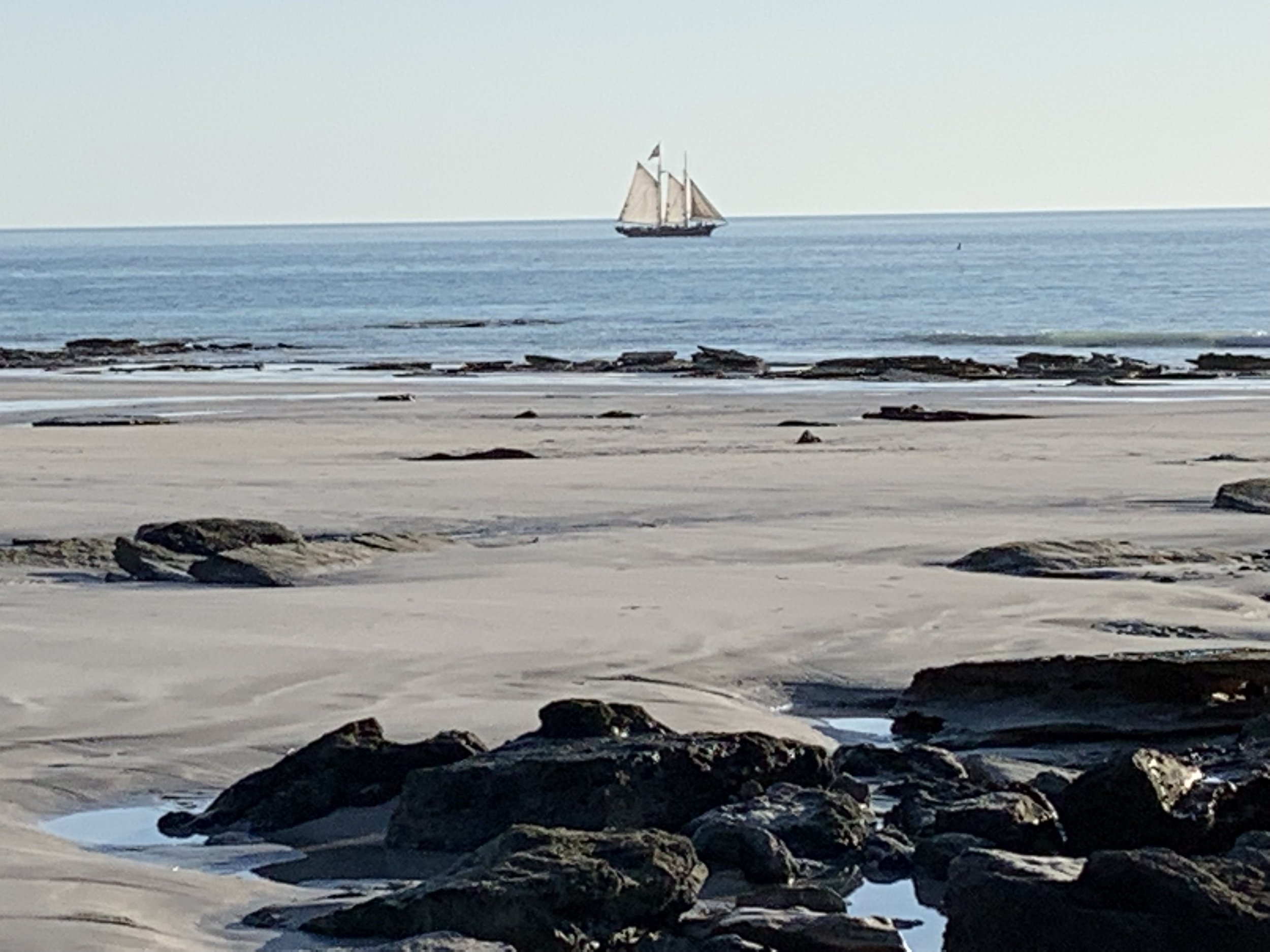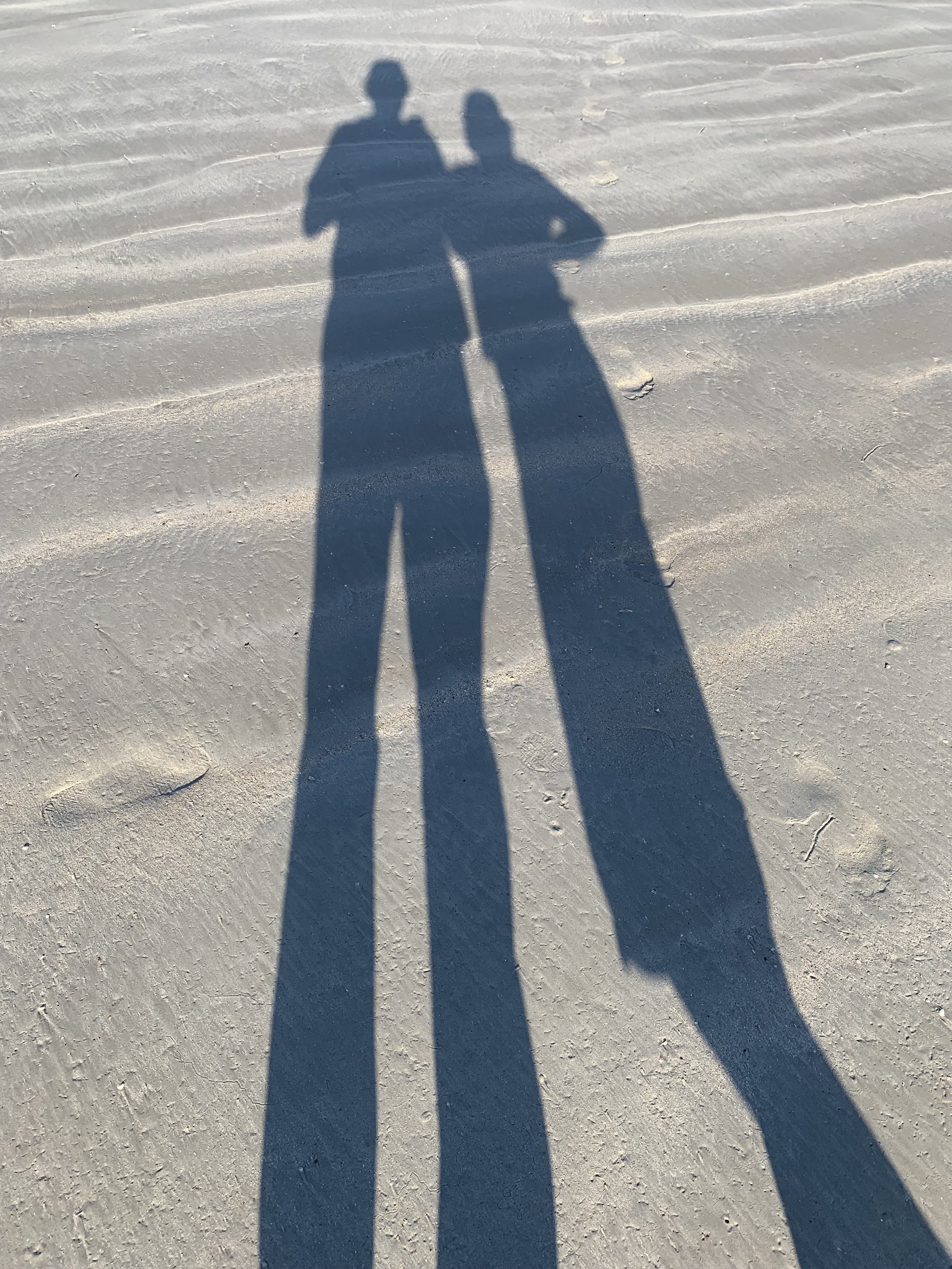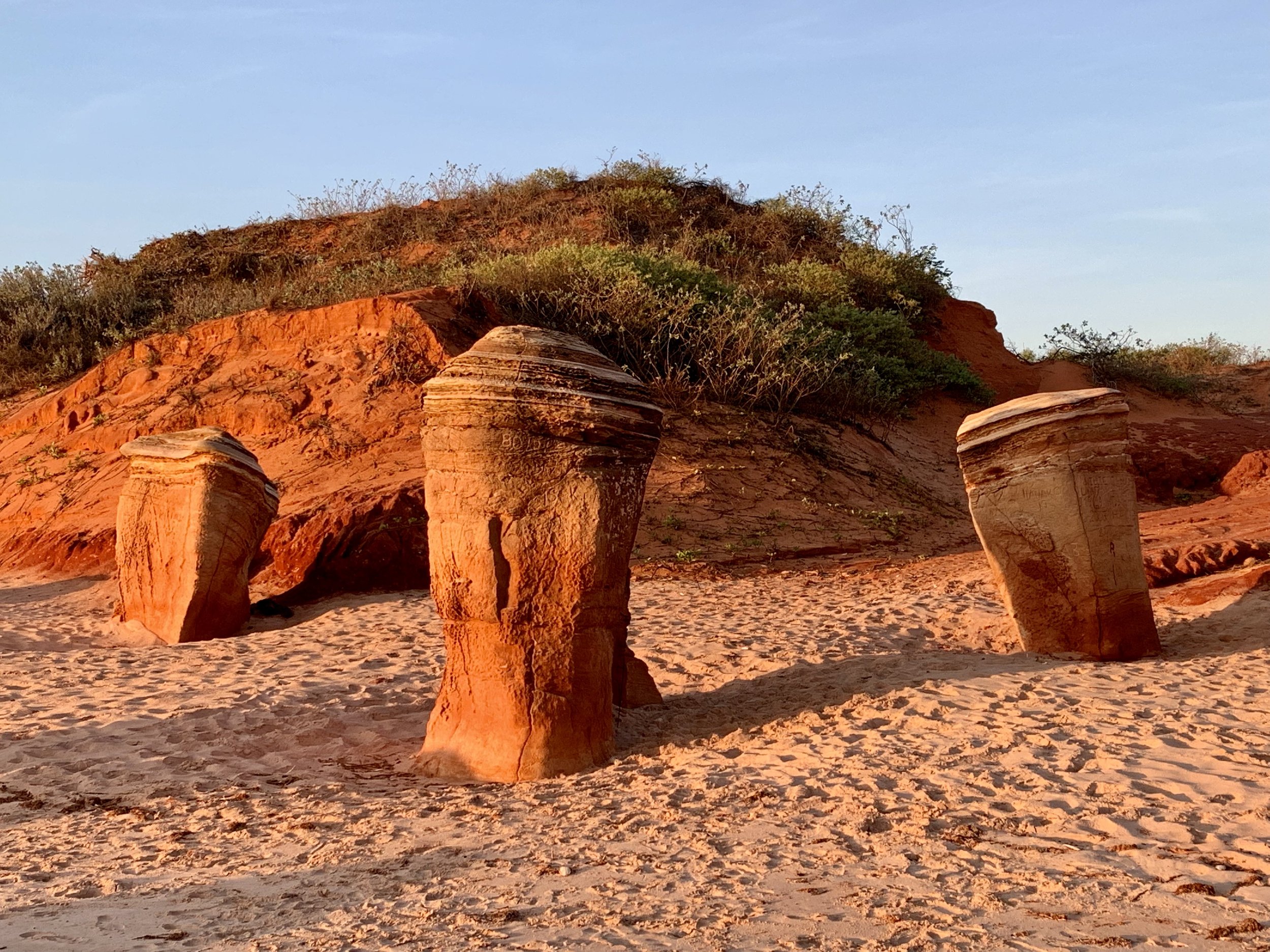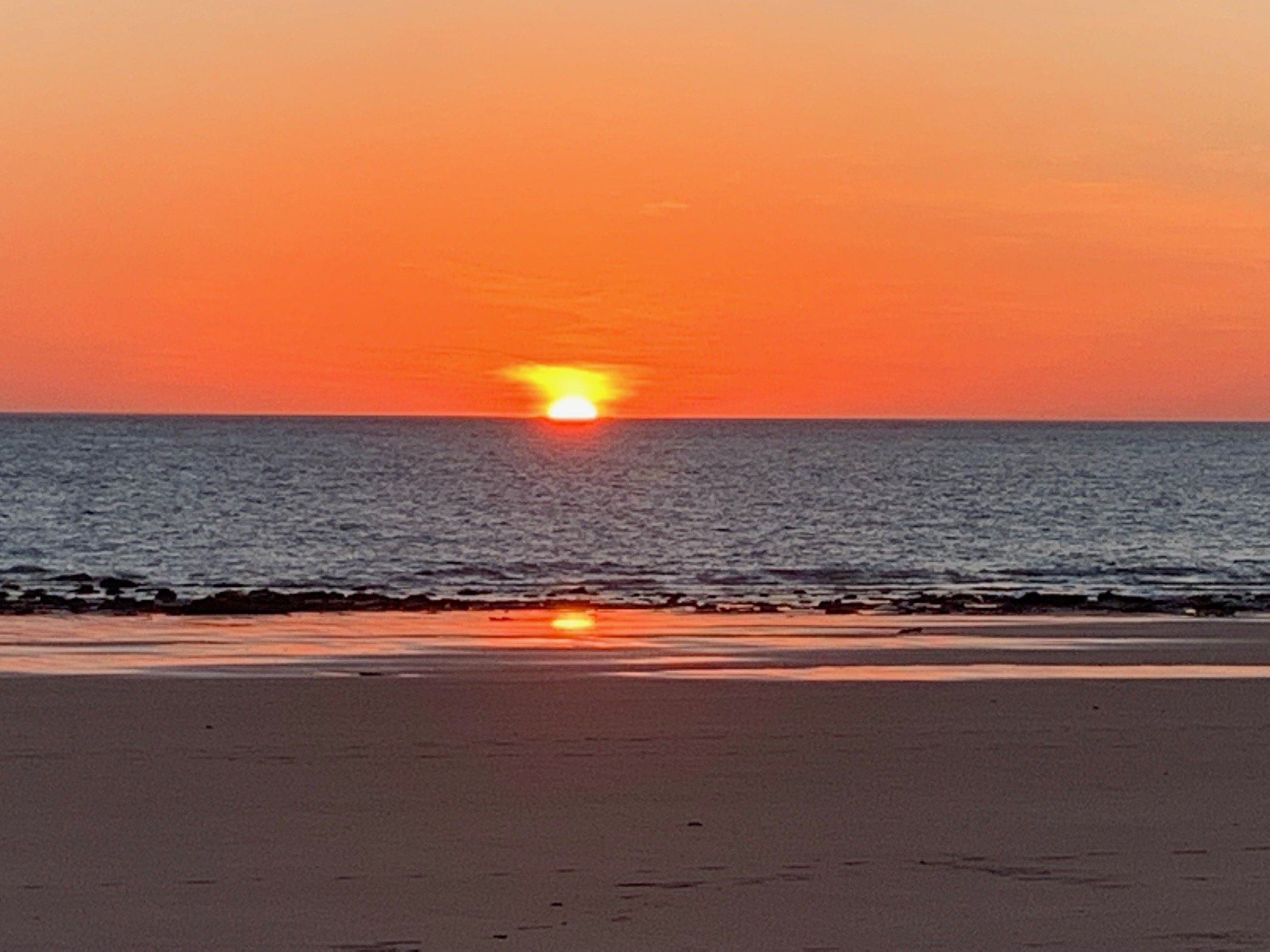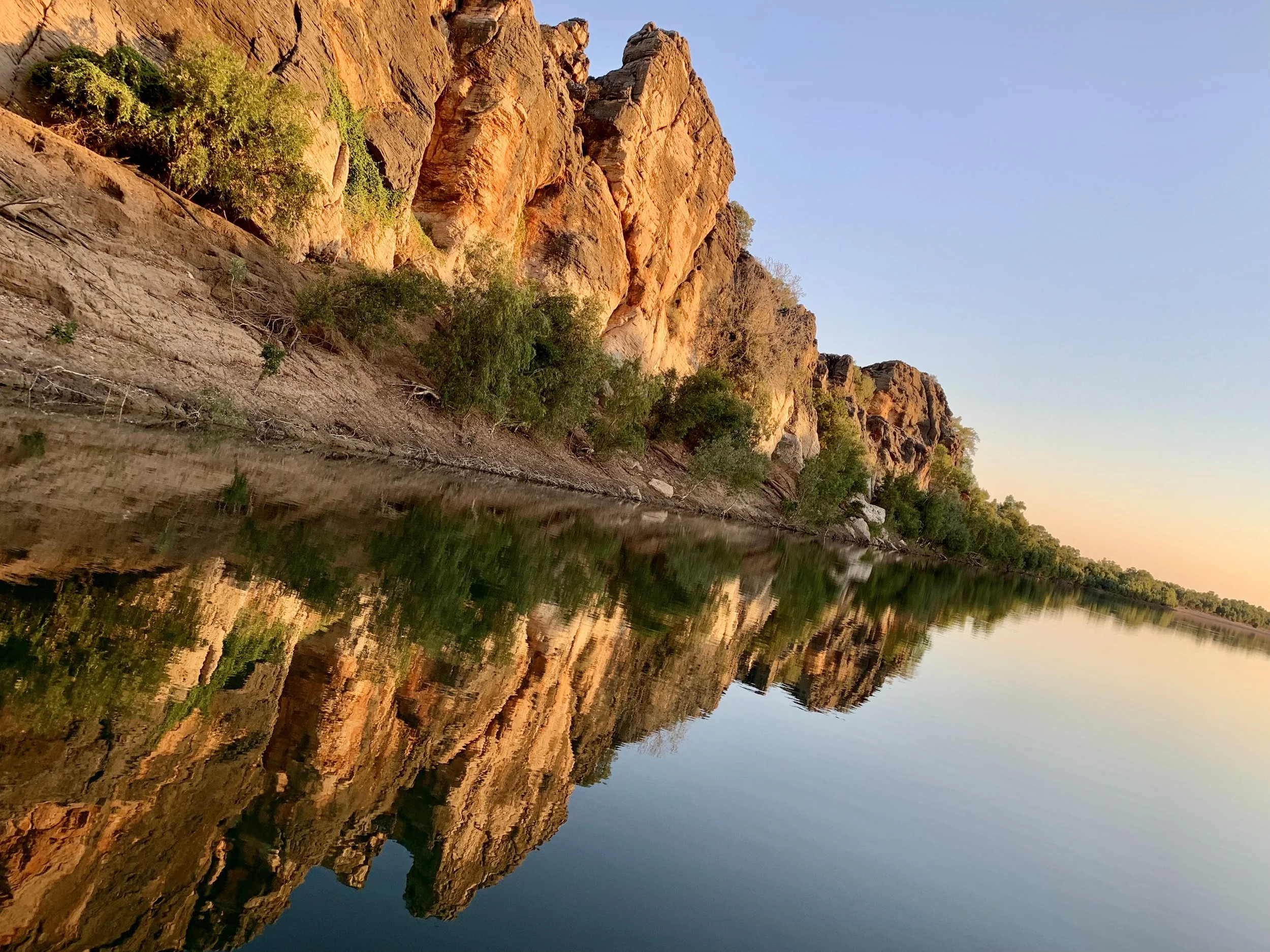Camels, pearls, and a staircase to the Moon
It was a longer day’s drive from Eighty Mile Beach to Broome than we’d done in a while, about 370 kilometres – which is nothing by Aussie standards, of course. We filled up at Sandfire Roadhouse, where we’d originally intended to spend the previous night before we were seduced by the longest sweep of fabulous beach imaginable. The fuel was an extortionate price – $1:84/litre, at least 30 cents/litre more than we had ever paid before in the outback. We drove on a further 100 kilometres, to Stanley Rest Area, before stopping for a late breakfast.
Whenever you stop in a remote area to eat, drink and revive, always cast your eyes beyond the highway and its immediate surrounds. As we headed up Highway 1 beyond Port Hedland towards Broome, you can’t see far into the flat interior: there are no protruding mountain ranges, or even foothills. But the extensive Karajarri Indigenous Protected Area (IPA) is out there, divided into zones to help the Karajarri manage country to protect ecological integrity and cultural values, while ensuring that biodiversity and conservation outcomes are consistent within Australia’s National Reserve System. Beyond the IPA is the Great Sandy Desert. You couldn’t see the low sandy landscape, but knowing it was just over there, for miles and miles, was tantalising.
Looking beyond a rest area into the great unknown while munching on my muesli was something I relished at the start of a long day on the road. Australia does lay-bys brilliantly: they’re spacious, usually set back from passing heavy traffic, and they often have toilets.
Never do what I did in the second image below, by the way, and stop right by the road, unless it’s an emergency. In the outback, people drive fast and furiously to cover the large distances, often for hours on end. Some of them inevitably lose concentration or close their eyes involuntarily at the wheel. I wanted a pic of the stray animals warning (for nearly 300 kilometres!), and the highway was empty. I like to think I’d long ago mastered the skill of dive-out-and-dash photography, but that’s not to say it’s advisable.
We had always intended to spend several days in Broome. The campsite was packed but there were mature trees here and there to distract from wall-to-wall vans. We registered, identified our spot, and went straight into town to take up position on the upper terrace of the Mangrove Hotel, ready for the show. The Staircase to the Moon is a natural phenomenon that happens on two or three days a month between March and October as the full moon rises over the exposed rippled tidal flats of Roebuck Bay.
The Mangrove Hotel was a relaxing venue in which to while away a few hours waiting for Moon-rise: watching people; staring absentmindedly to the horizon; wandering up to the bar every now and again for supplies. There was no pressure to buy food or drink, but we did, fully enjoying a unique experience from front-row seats.
Mangroves and channels at sundown
When you’re about to witness something exceptional – same as during the total solar eclipse at Salem, Oregon, in 2017 – you face a dilemma. Do you concentrate one-hundred-per-cent on thoroughly enjoying the spectacle unfolding before you, or should you attempt to capture it for posterity as well?
It’s easy to decide to watch something extraordinary and not worry about being a photographer. Especially if you’re unlikely to ever see such a thing again, you’ll want to watch it ‘live’, not through a lens. And can you really be bothered to creatively faff, adjusting options on a digital camera as light levels and subject matter change?
In this instance, there was plenty of time to stand and stare and also to point and shoot. There was no way I could not at least try to snap the Staircase to the Moon as it slowly took shape. This inadequate image of wonky little lines looking vaguely like steps, does little more than remind me I was actually there.
In hot tropical Australia, the pace of life felt unhurried, allowing you to take your time with anything or everything, not having to rush at it because you were there just once in a lifetime. Even the Moon was fashionably late to appear.
Broome had lots to offer on subsequent days. Cable Beach is a stunning length of almost-white sand – yes, another one. Western Australia tourism people describe it as ‘a sanctuary of sugar-white sand and gin-clear waters’ – possibly a clue to their lifestyle choices. It was spoilt, however, by 4x4s careening about as if they were in a lawless backwater. Someone explained that it was a WA thing; driving on to a beach wherever you fancied and however you liked, no matter if it’s busy with people – or camels, in their yellow, red or blue jackets!
I rode a camel once, in Morocco, when I was barely a teenager. They are such benign creatures, always smiling. You have to get on one while it’s kneeling, which is kinda helpful. As it stands up, however, it straightens its rear legs first, so for a couple of blindingly terrifying seconds you think you’re going to pitch forward over the animal's head. Were I to ride a camel again, I believe that knowledge would significantly reduce any fear of the unexpected. ‘You live, you learn… You scream, you learn’ (Alanis Morisette).
Gold deposits?
In Broome, where the streets are lined with ‘bottle trees’, we had a bookshop morning. The Magabala Indigenous Bookshop had some uniquely interesting books although, unsurprisingly, they were expensive. I doubt that what might these days be described as niche publishers can afford large print runs to reduce item costs.
This part of the world is also pearl country. The pearl is the only ‘gem’ that is produced by a living creature, in contrast to all other gem stones that are ‘made’ by Earth processes over long periods of time. A Canadian friend of mine from our Brisbane days made the most of Australia’s gem riches on subsequent visits – pearls, opals, pink diamonds! I’ve never been much of a pearls girl myself, and much of the jewellery on offer in places famous for their rocks and stones, tends to be large and showy. I looked into Broome’s shop windows confident I couldn’t be tempted. I’ve always kept an open mind when it comes to jewellery, however, so when I spotted a tiny perfect pearl inside a delicate white-gold shell, I was instantly smitten.
It was hot and humid during our Broome days: the diary describes us ‘hopping’ from shade to shade, which sounds much too strenuous. Some entries were written several days after the event, or even later, either because energy was in short supply or I prioritised what we were doing over diary writing. And I took fewer photos sometimes because I was concerned about dropping camera or phone into the sea, so left them behind.
Possibly the most impactful experience during our Broome days was the boat trip from Cygnet Bay, which for many reasons has to have its own post. The not-to-be-missed Broome gem for me was Reddell Beach, where you can watch the sun go down by even redder rocks.
Camels at the beach
Reddell Beach
How is this red even possible?
Variations of Broome Sandstone
'Me with my parents'
'Putting the bins out'
Levitation?
Forgive me if I’ve overdone the red rocks, but just to continue the colour theme one more time…





